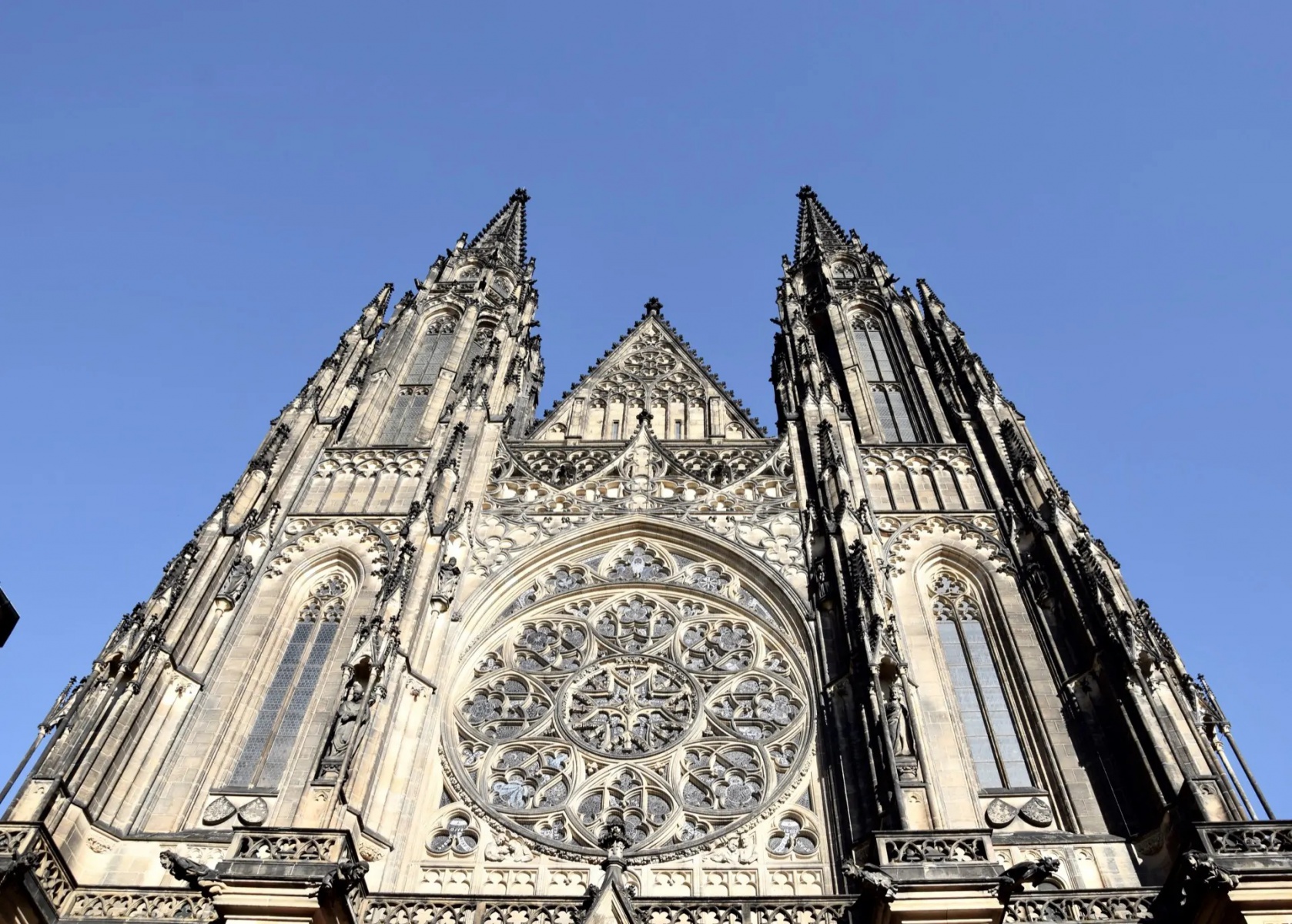I hope you didn't think I forgot to tell you about the Church of St. Vitus. In fact, I wanted to write a whole article about it here on my blog. It is built directly to Prague Castle, it has historically served many families and nobility and is one of the most popular buildings from the whole castle complex. It is unimaginable for eyes, but I noticed that a lot of websites attracting you to this monument have a very weak description of the entire temple. Personally, I like to read about where I'm going in advance. About its history and all. When the guide tells me about the place, I'm already orientated and I'm more interested in the whole tour. That is why I decided to write something more about it.
It was not a temple at first, but a rotunda that was founded by Wenceslas of the Premyslid family. St. Wenceslas was the patron of the Czech nation. His mortal remains were later transferred to the original cathedral, and the cathedral was named after him in his honor. The Rotunda became the centerpiece of the church. Later, the mortal remains of St. Vojtěch, the second Czech Bishop were transferred here. During the reign of Spytihněv II. the construction of the basilica, which later replaced the rotunda, was started in 1060. In this basilica, many Czech rulers from the Premyslid and Luxembourg family were buried.
The Basilica became metropolitan around the year 1344. The basilica was interesting mainly because it was out of town. Most of the churches were built in the city center. At that time Karel Luxembourg started the reconstruction of the basilica. He asked Matthias of Arras, who perfected the construction of the French cathedral. His successor, Petr Parléř, perfected the temple artistically.
Under the reign of Charles IV. Prague was the center of culture and art. The construction of the Prague cathedral has been one of the most important for decades. The crown jewels were also stored in the cathedral. They are accessible directly from the Chapel of St. Wenceslas.
At the same time, I must mention the events that led to the cathedral being damaged. One of them was the Hussite oblivion, the fire in 1541 or reign of Friedrich Falck when inner spaces were destroyed.
Even though a lot of churches were built in the Baroque period, the cathedral wasn't one of them, but at the same time, the foundation stone was laid in 1673. The restoration of the old parts of the cathedral began in 1844. Five hundred years after the foundation stone of the cathedral was laid.
Of course, there is much more to tell, but I see these moments as the most important. Nothing has changed even with the emergence of the Czechoslovak Republic. St.Vitus Cathedral is a symbol of the Czech nation, a place of artistic excellence and, last but not least, a cultural monument.
If you are interested in the history of the temple, take a look at our site. The guide and founder of BellPrague, Barbora Zukalová will love to take you through the castle complex and tell you everything about its history.
From our external collaborator Tereza Kultová